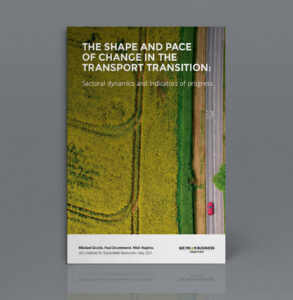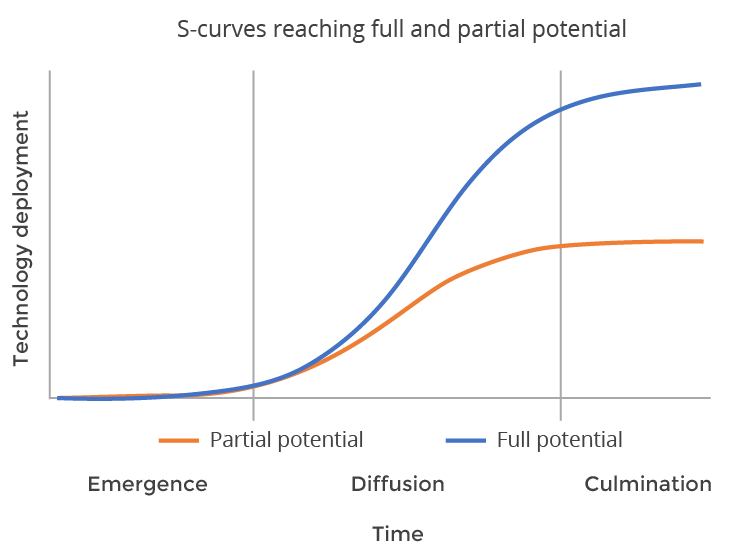Shape and Pace of Change in the Transport Transition: Sectoral dynamics and indicators of progress
 Change is not linear. Time and again, industry leaders, policy makers and experts have been surprised by the pace at which new technologies transform markets and societies. From horses to cars, landlines to mobile phones, or videos to streaming, technological innovation tends to happen abruptly and radically.
Change is not linear. Time and again, industry leaders, policy makers and experts have been surprised by the pace at which new technologies transform markets and societies. From horses to cars, landlines to mobile phones, or videos to streaming, technological innovation tends to happen abruptly and radically.
The report The Shape and Pace of Change in the Transport Transition, commissioned by the We Mean Business coalition and conducted by UCL Institute for Sustainable Resources (UCL ISR), finds the uptake of electric vehicles (EVs) is now surging up and following an ‘S-curve’ growth. With the transport sector accounting for 24% of energy-related CO2 emissions – of which 45% are due to passenger road vehicles – it is vital to sustain and extend this transition towards zero-emission vehicles.
Electrification of road transport through EVs, in combination with a net-zero power system, is one of the most promising climate solutions available. Harnessing the potential of the ‘S-curve’ – with the right policies and investments – is critical to ensure a net-zero transition at the pace and scale needed to limit global warming to 1.5°C.
This analysis on the dynamics of ‘S-curves’ follows a previous report on renewable energy, which highlighted the power sector’s critical role in leading the global transition to a net-zero carbon future and tackling the escalating climate crisis. While the energy sector has to lead the global transition to a net-zero emissions economy, the transition also hinges on other sectors switching from fossil fuels to renewable electricity.
Research by the Energy Transition Commission showed that from 2024 consumers will prefer EVs over petrol and diesel cars on all fronts – costs, environment and performance. This new report goes one step further: EV sales have increased 41% per year since 2015 and if this ‘S-curve’ continues all new cars sold could be electric by 2040.
However, the climate crisis demands that we push harder. In line with halving emissions by 2030 and a net-zero future by 2050, we need 100% zero-emission vehicle sales by 2035. This report gives concrete recommendations to policy makers on how to accelerate EV uptake, including:
- Invest in infrastructure for reliable, seamless and publicly accessible EV charging.
- Commit to public procurement of EVs and incentivize private companies to do the same, for example through the Climate Group’s EV100 program.
- Further reduce EV purchase costs, for example by stimulating leasing schemes and second-hand markets for EVs and batteries.
The transition to zero-emission vehicle is happening, but whether it will happen at the pace and depth needed depends on how policy makers and businesses harness this potential. Public-private collaboration is an essential part to accelerate the transition and halve emissions by 2030.


